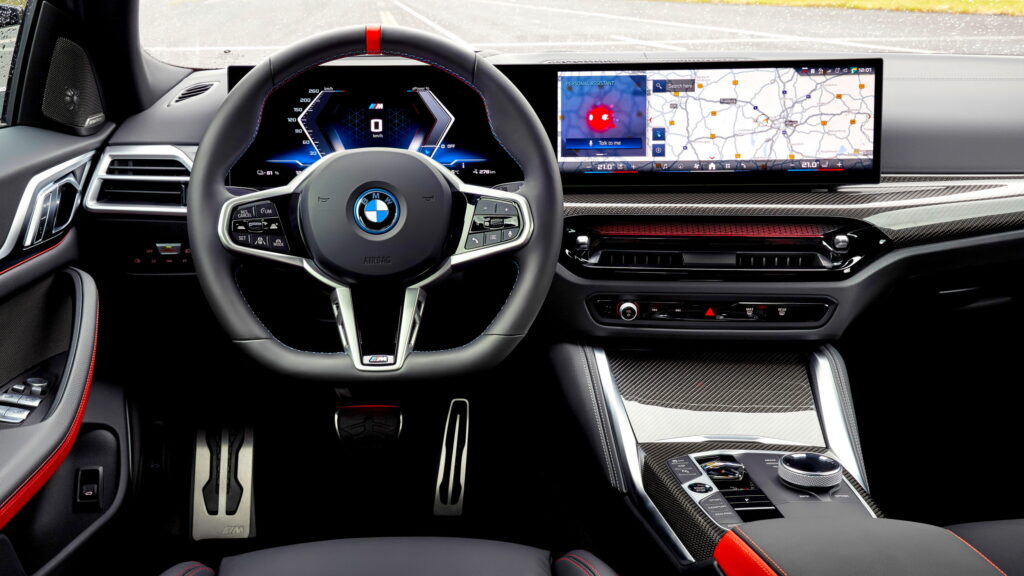Audi Q3 Sportback Debuts with Sleek Design and Impressive Hybrid Range

Renault Kiger Facelift Debuts in India With Fresh Design, More Safety, and Value-Packed Upgrades

Sleek New Q3 Sportback Unveiled With Bold Design Hybrid Power and High Tech Interior
 Coupé version of SUV gets fresh look, new interior and choice of diesel, hybrid or plug-in hybrid power
Coupé version of SUV gets fresh look, new interior and choice of diesel, hybrid or plug-in hybrid power
Audi has unveiled the new Q3 Sportback, with a fresh look and a new interior.
It follows the June launch of the technically identical third-generaiton Q3 SUV – one of the German car maker’s best selling models.
Compared with that car, the Q3 Sportback differs only by a raked roof that is 29mm lower for a “sportier appearance”. Surprisingly, this doesn't affect rear luggage space, which is rated at 488 litres.
The Q3 Sportback features a new exterior design that significantly departs from its predecessor. It borrows many lighting elements from the new A6 Avant, including slimmed LEDs at the front and a similar light bar and rear light design.
Like other new Volkswagen Group vehicles, the Q3 Sportback has an illuminated rear badge.
The new Q3 Sportback’s cabin mirrors that of newer Audi models, such as the A6, adopting a 12.8in infotainment screen and 11.9in instrument cluster.

A notable change is the traditional control stalks being replaced with a new ‘steering wheel control unit’, which houses everything from drive selection and light functions to windscreen wiper operations and even the indicators.
While not as pronounced as a stalk, the block still moves when operated.
This new addition means the previous model’s gear selector on the centre console is gone, freeing up space for a pair of cupholders and a wireless phone charging pad.
Again based on the same MQB platform as the Audi A3 and Volkswagen Golf, the new Q3 Sportback mirrors the powertrain selection of the Q3 SUV.
The range opens with a 148bhp mild-hybrid petrol four and is topped by a 268bhp plug-in hybrid (badged E-hybrid) with 73 miles of electric-only range (down two on the equivalent Q3 SUV). It's also offered with a 148bhp diesel four.

The Q3 Sportback will go on sale in October, a month after the Q3 SUV, priced from £39,800. The range tops out at £45,800 for the E-hybrid.
Hertz Expands Used Car Sales Nationwide Through Amazon Autos

Electric Super Saloon Shatters Distance Record by Circling the Globe in Under Eight Days

GT XX also travelled nearly 25,000 miles in less than eight daysWild super saloon concept does 3405 miles in 24 hours - then 'laps the world' in less than eight days
Mercedes-AMG’s new high performance GT XX concept – the recently revealed super-saloon that previews the next AMG GT 4-door coupé – has set a new electric car distance record having travelled 3405 miles in 24 hours.
The new record, which was independently verified, was set at the Nardò test track in Italy where the concept achieved a claimed average speed of 186mph and only stopped to rapid charge at up to 900kW.
It beats the previous record of 2461 miles set by the XPeng P7 earlier this month. Previous record attempts include the 2451 miles achieved by the Xiaomi YU7 Max and the 2310 miles recorded by the Mercedes-Benz CLA.
The 24-hour achievement was one of several new records claimed by Mercedes-AMG during an extensive eight-day testing campaign at the 7.8-mile Nardò ring. Other records broken by the GT XX include endurance marks for 12, 48, 72, 96, 120, 144 and 168 hours, alongside new distance benchmarks for 2000, 5000, 10,000, 15,000, 20,000 and 25,000 miles.
The stand-out achievement came as the GT XX travelled 24,907 miles (the circumference of Earth) non-stop on Nardo's high-speed oval in fewer than eight days - seven days, 13 hours, 24m:07.10s - to be exact. As a nod to Jules Verne’s famous novel, the bid was titled “Around the World in 80 Days”.

The various records were achieved using two cars and a team of 17 professional drivers drawn from Mercedes-AMG's GT3 motorsport programme - and also including Mercedes-AMG F1 driver George Russell.
They worked in three-shift rotation, with five drivers present for each eight-hour stint. A trackside engineering and logistics crew, plus a mission control team managing charging strategy from Mercedes-AMG's Affalterbach headquarters in Germany, totalled more than 100 personnel across the eight-day programme.
The achievement continues Mercedes' record-breaking legacy, echoing the C111 prototypes of the 1970s.
How the GT XX broke records
Central to the record-breaking performance was the GT XX's advanced electric drivetrain, according to Mercedes-AMG CEO Michael Schiebe. The system employs two axial-flux motors at the rear and a third unit at the front, all operating on an 800-volt architecture and producing a combined 1341bhp.

The car maker said an energy replenishment strategy drawing heavily on the prototype's ability to charge at rates between 850kW and 900kW proved crucial to the record haul, providing ultra short stopping times.
The GT XX's cylindrical cell battery, developed in-house with input from Mercedes-AMG's Formula 1 powertrain division at Brixworth, features a 114kWh oil-immersed pack using direct liquid cooling with 40 litres of coolant maintained at constant temperature.
This oil-immersion technology is claimed to deliver superior heat transfer compared with conventional systems, sustaining ultra-high charging rates without degradation and enabling a theoretical 249-mile top-up in approximately five minutes.
"Enormous performance and extremely fast charging were always available and made these records possible. For customers of our future electric models, this means they will get a genuine AMG – no ifs, no buts," said Schiebe.

While capable of higher speeds, the pace of the Mercedes-AMG prototype was set by information gained in early reconnaissance runs and simulations. According to these analyses, 186mph offered the optimal balance between track speed and charging stops, delivering the fastest overall time, Mercedes-AMG says.
The GT XX is not a production vehicle, contrasting with the production-derived XPeng P7, Xiaomi YU7 and Mercedes-Benz CLA that previously held records. However, it demonstrates Mercedes-AMG's approach to validating future technology ahead of production of its AMG.EA electric platform based models, including a 1000bhp super-SUV planned for UK launch in 2027.
The production Mercedes-AMG GT 4-Door Coupe, scheduled to arrive in the UK towards the end of 2026, will inherit the GT XX's mechanical package with targeted performance figures of 0-62mph in under 2.5 seconds and a top speed of 224mph.
Nissan Roox Redefined Spaciousness and Tech in Japan’s Cutest Kei Car

Florida’s Super Speeder Law Shocks Drivers as Dozens Arrested in Crackdown

Nissan Faces Lawsuit Over Turbo Engine Failures Leaving Drivers Stranded

Toyota Prius Reinvented as a Bold Supercar-Inspired Roadster

Does Driving Fast Really Help Your EV Battery Last Longer? Experts Set the Record...











